16 Best Garden Edging Ideas to Elevate Your Landscape

Garden edging is more than just a functional aspect of landscaping; it’s the finishing touch that transforms and elevates your outdoor space into something truly special.
It creates clear boundaries, enhances visual appeal, and adds structure to your garden.
Whether you’re aiming to achieve a polished and professional look, prevent plants from spreading into your pathways, or reduce soil erosion during rainfall, the right garden edging can make a significant difference.
From classic stone borders to eco-friendly options like repurposed materials, there are endless ways to tailor edging to suit your garden’s style and needs.
This arcticle will explore 16 creative and practical garden edging ideas, detailing their unique benefits, and ways to personalize your garden with charm, organization, and a touch of your personality.
Dive in to discover how garden edging can take your outdoor project to the next level!
16 Garden Edging Ideas
1. Concrete Wall Edging

A short concrete wall can define your garden with both elegance and durability.
This type of edging is perfect for a contemporary or minimalistic garden style, offering a sleek and modern aesthetic.
While it requires professional installation due to the complexity of pouring and setting concrete, the result is a long-lasting, weather-resistant solution that can withstand the elements for years.
You can even customize the color or finish to complement your outdoor space.
2. Brick Wall Edging
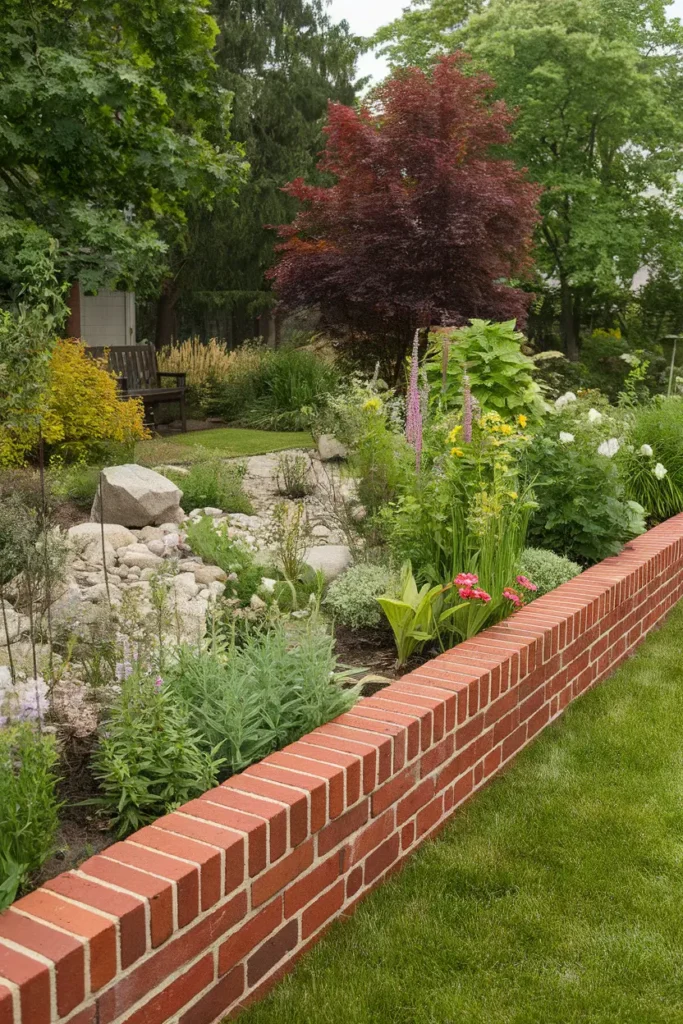
Brick walls add a classic, timeless charm to any garden, making them a popular choice for both traditional and cottage-style designs.
Build a small, sturdy wall to keep your plants contained and create a sense of order, or use bricks laid flat as a subtle, low-profile border.
This option is highly durable and versatile, with endless layout possibilities, from straight lines to curved shapes. Brick also ages beautifully, adding character to your garden over time.
3. Grass and Shrub Edging
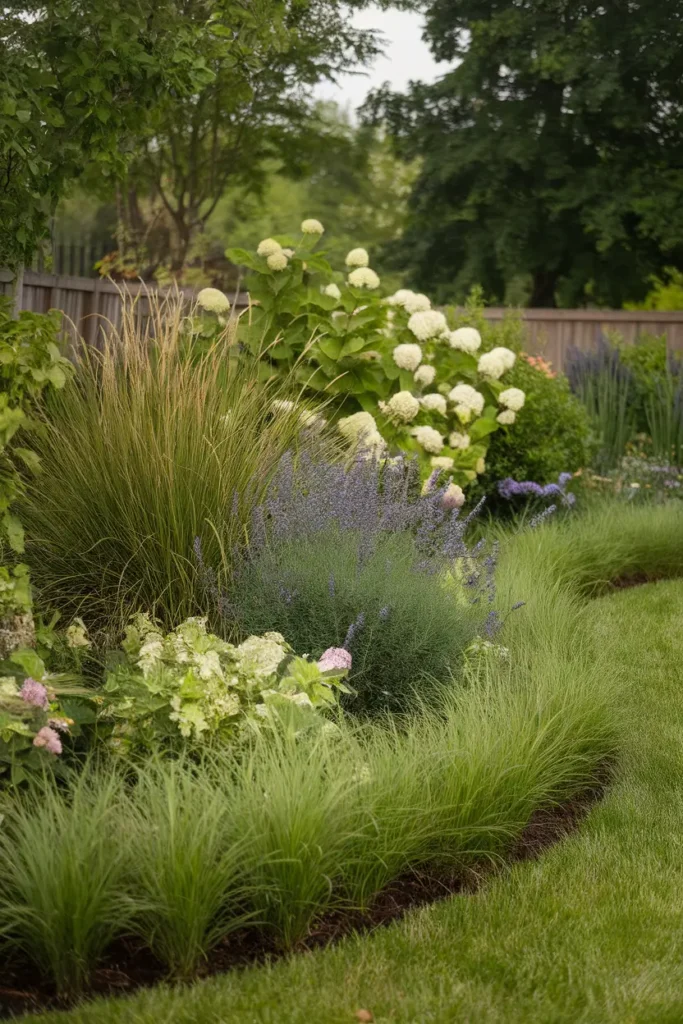
For a natural and organic garden border, consider using ornamental grasses and flowering shrubs.
This option blends seamlessly into your outdoor space, creating a lush, vibrant look that evolves throughout the seasons.
To keep the design dynamic, choose plants with varying heights, textures, and bloom times, such as lavender, ornamental grasses, or hydrangeas.
This type of edging requires regular pruning and maintenance but rewards you with a garden that feels alive and thriving year-round.
4. Scalloped Terracotta Edging

Terracotta tiles with scalloped edges are ideal for creating a rustic or Mediterranean-style garden. These tiles are lightweight and easy to install, making them a great option for DIY enthusiasts.
Simply dig a shallow trench to secure the tiles in place. Their warm, earthy tones and handcrafted appearance instantly add charm and personality to your garden beds.
They pair well with gravel paths, potted plants, and other rustic elements for a cohesive look.
5. Plastic Edging

Plastic edging is a cost-effective, low-maintenance solution for creating clean, defined borders in your garden.
This type of edging is incredibly easy to install—just sink it into the soil with minimal tools required.
Plastic edging works well for straight lines or curved pathways, making it versatile for gardens of all shapes and sizes.
Available in various colors and styles, it’s a practical choice for homeowners looking to keep their garden tidy without breaking the bank.
6. Gravel Edging
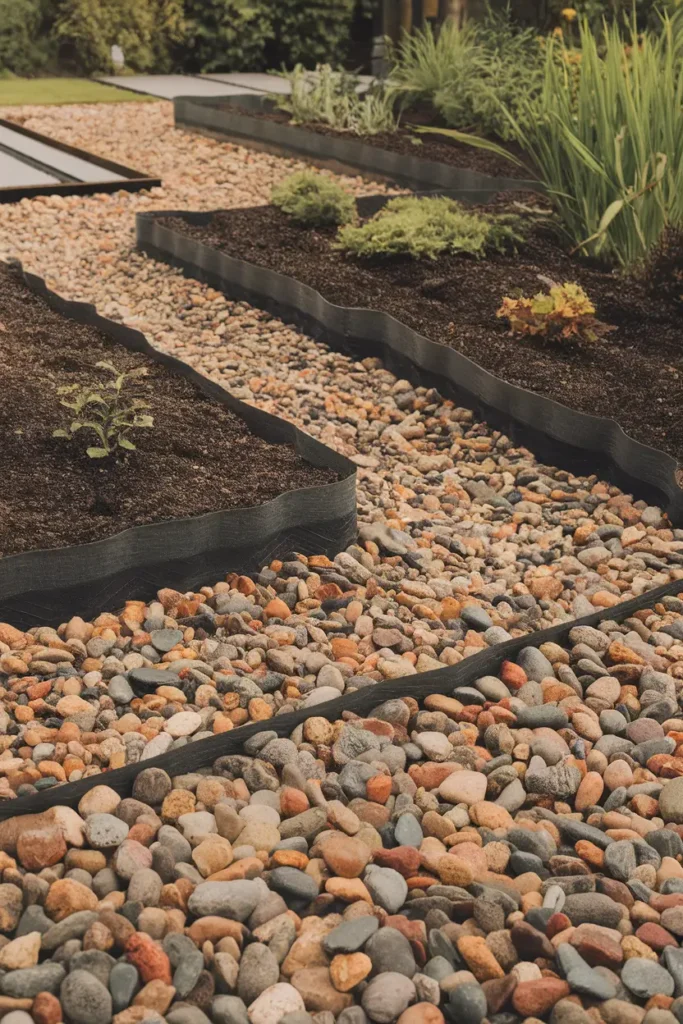
Gravel offers an affordable, minimalist option for edging that’s both functional and visually appealing.
To create a gravel border, dig a shallow trench, place a weed barrier to prevent growth, and fill it with small stones or pebbles.
This method is simple to install and works well to frame pathways, garden beds, or driveways.
Gravel comes in a variety of colors and sizes, allowing you to match it to your garden’s overall theme. Its drainage properties also make it a great choice for areas prone to heavy rain.
7. Glass Bottle Edging
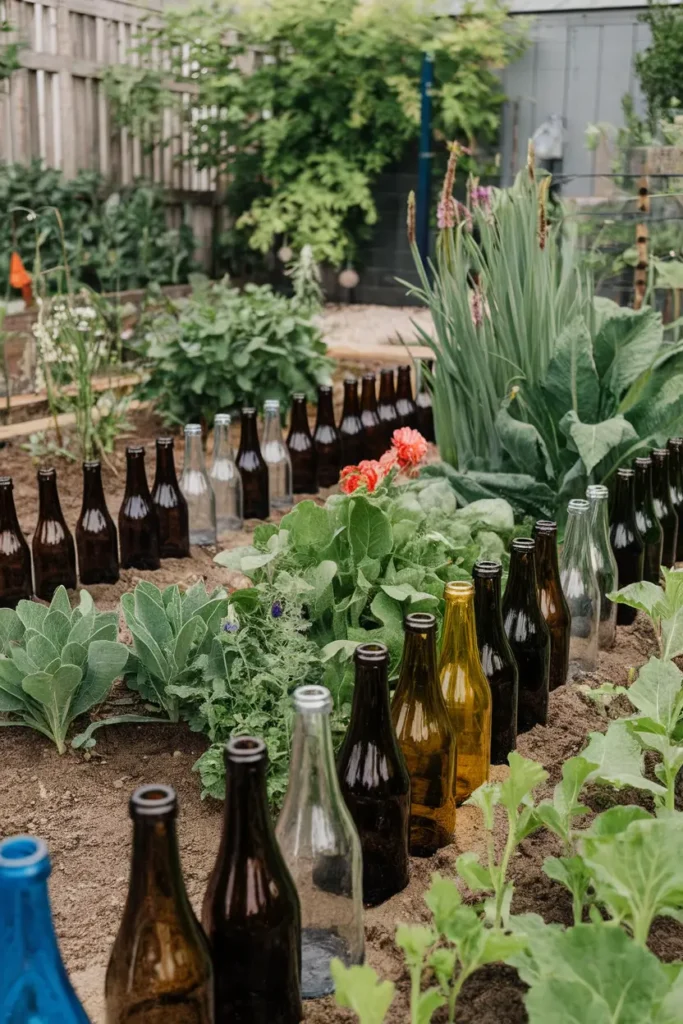
Eco-conscious and visually unique, glass bottle edging is a creative way to repurpose old bottles and add a quirky appeal to your garden.
To create this border, dig a trench and embed recycled glass bottles upside down into the soil, leaving the necks visible.
You can use bottles of different colors for a playful, mosaic effect or stick to a single color for a more uniform look.
This edging method not only reduces waste but also adds a fun, artistic touch to your outdoor space. It’s a great conversation starter and perfect for gardeners who love DIY projects.
8. Raised Garden Bed Edging
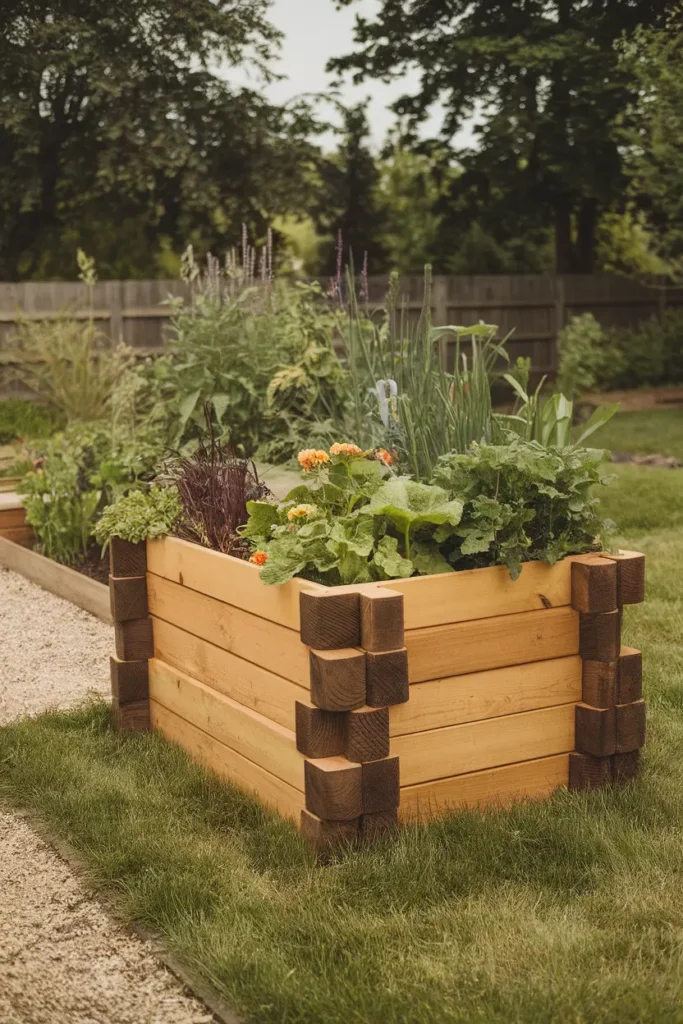
Raised garden beds are not only practical for gardening but also serve as excellent edging. They help define your planting areas while adding height and structure to your yard.
Build raised beds using wood, stone, or even recycled materials for a sustainable option.
These beds make gardening easier by reducing the need to bend down and can be customized to any size or shape.
They also act as a focal point, drawing attention to specific plants or flowers, and are ideal for growing vegetables, herbs, or flowers in a neat, contained space.
9. Recycled Rubber Edging
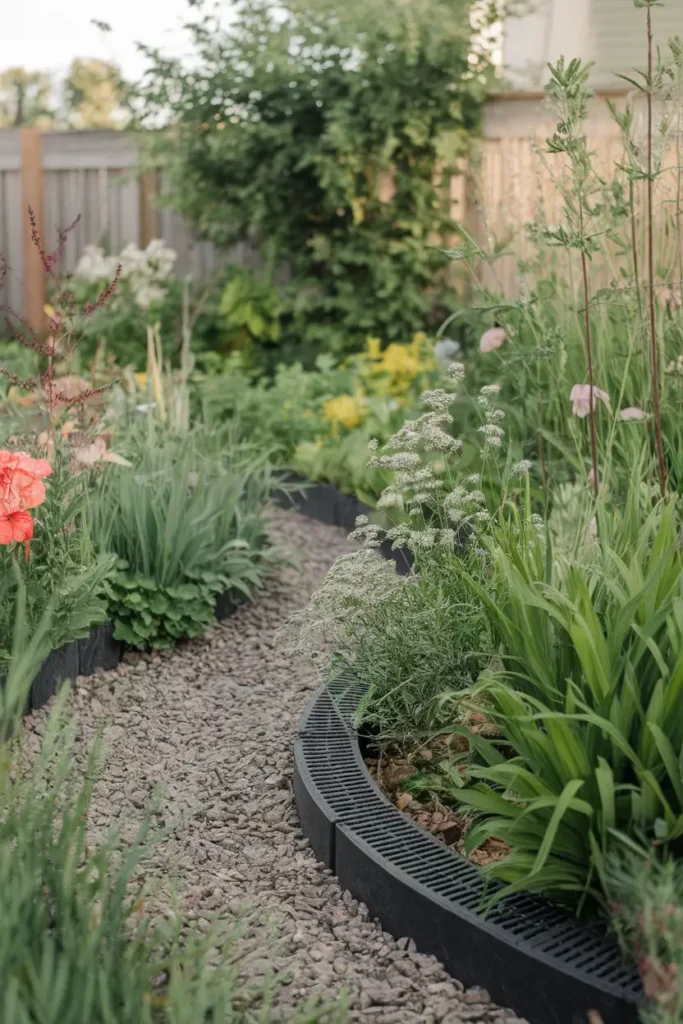
Made from repurposed materials, recycled rubber edging is an eco-friendly choice that combines flexibility, durability, and sustainability.
It’s designed to withstand harsh weather conditions without cracking or breaking, ensuring a long-lasting solution for your garden.
The no-dig installation feature makes it incredibly easy to set up, making it perfect for both novice and experienced gardeners.
10. Stone Pillar Edging
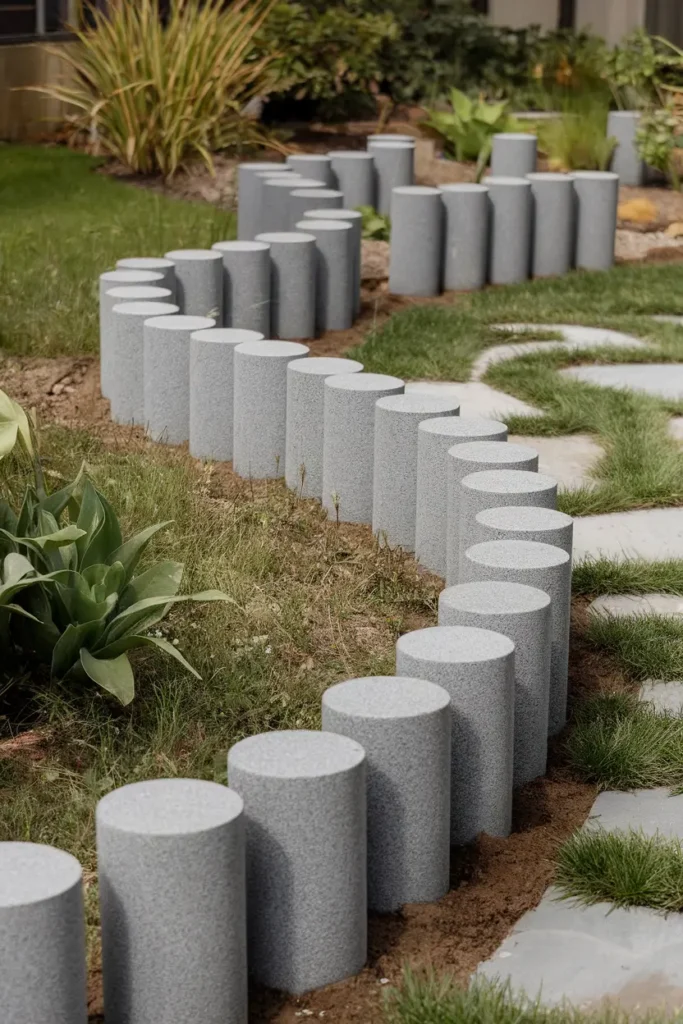
For an elegant and timeless look, stone pillars are a fantastic choice.
These interlocking stone sections create a cohesive, professional appearance while offering strong durability.
Individual stones can be arranged to create curved or uniquely shaped layouts, adding charm to your garden.
Their versatility allows them to complement both formal and informal designs.
11. Stone and Gravel Edging

Stone and gravel edging is a naturalistic and textured option that brings depth and character to your garden.
To achieve this look, dig a shallow trench, pour a layer of gravel for drainage, and top it with large stones arranged in a pattern or scattered for a more organic appearance.
This combination is ideal for gardens that blend modern elegance with traditional rustic elements.
12. Eucalyptus Wood Border Edging

Eucalyptus wood is a beautiful and sustainable option that adds a relaxed, tropical feel to your garden, especially in warm climates.
Its natural tones and smooth finish enhance gardens inspired by coastal or water-themed designs.
The wood is naturally resistant to decay and pests, making it a practical and decorative choice for outdoor spaces.
13. Flagstone Edging
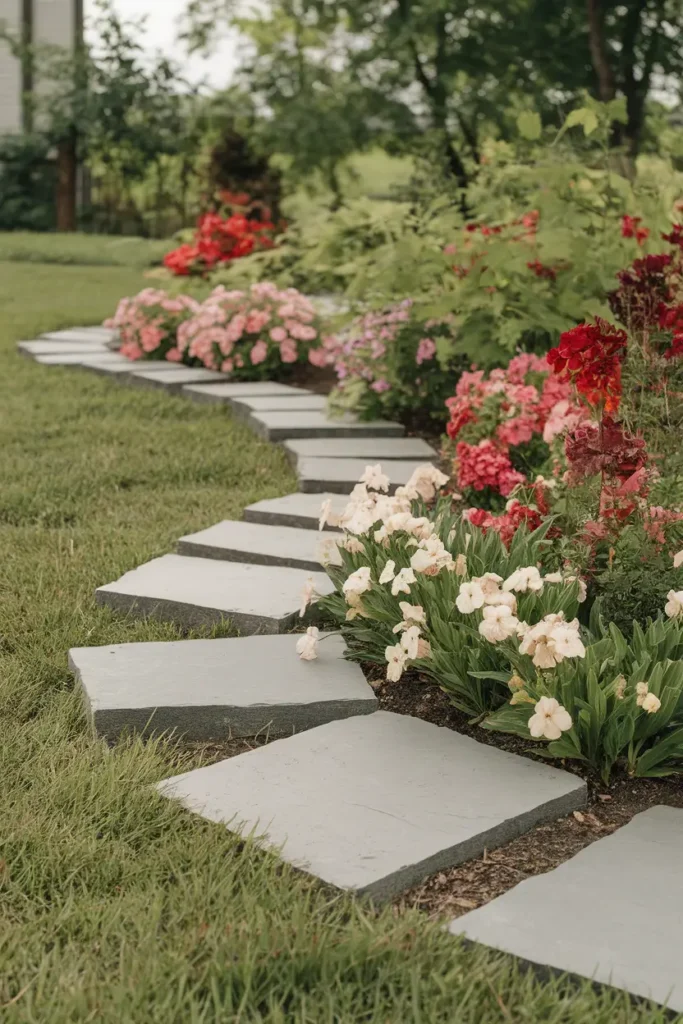
Flagstones provide a rustic, country-style aesthetic that works well in both casual and formal garden settings.
These flat stones can be arranged horizontally for a grounded, understated look or stacked vertically to create a more striking, dramatic effect.
Flagstones are versatile and durable, making them a great option for long-lasting garden borders.
14. Metal Edging

Metal edging offers a sleek and modern appearance that is perfect for contemporary gardens.
Flexible yet sturdy, metal strips can be shaped into seamless, curved lines or sharp angles, depending on your design preferences.
Installation is straightforward—simply hammer the strips into the soil for an effortless, clean finish without digging.
They are also resistant to weathering and rust, ensuring a polished look for years to come.
15. Weathering Steel Edging
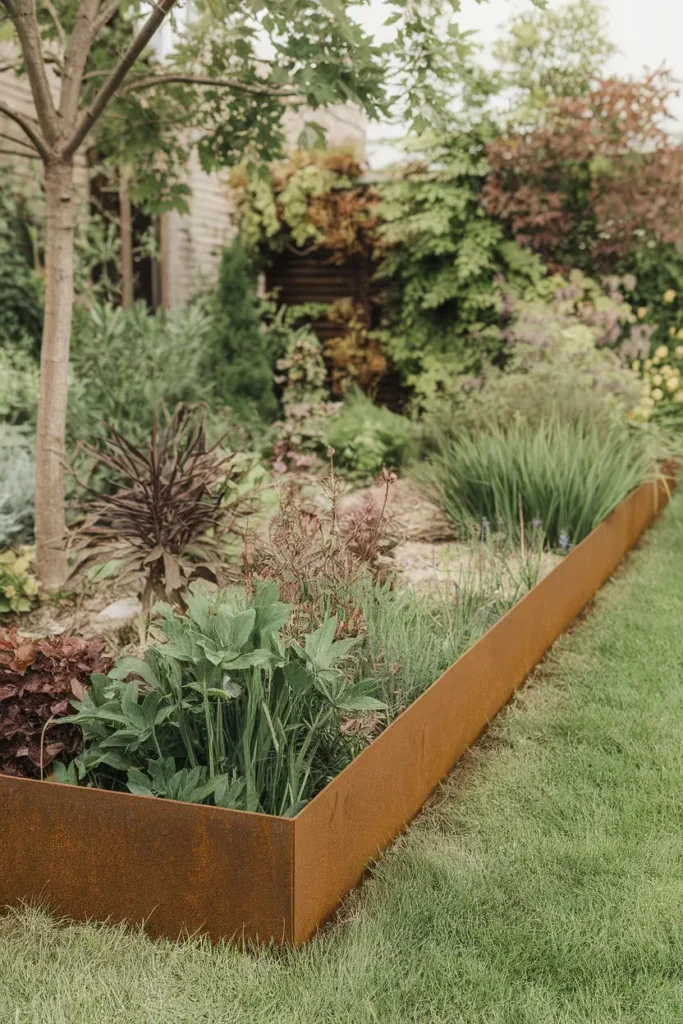
Known as corten steel, weathering steel provides a unique, industrial aesthetic that develops a rusted patina over time.
This distinctive feature adds warmth and character to any garden, blending well with natural surroundings.
It’s extremely durable, requiring minimal maintenance, and can also serve as edging or even raised garden beds, making it a versatile and stylish choice.
16. Living Hedge Edging
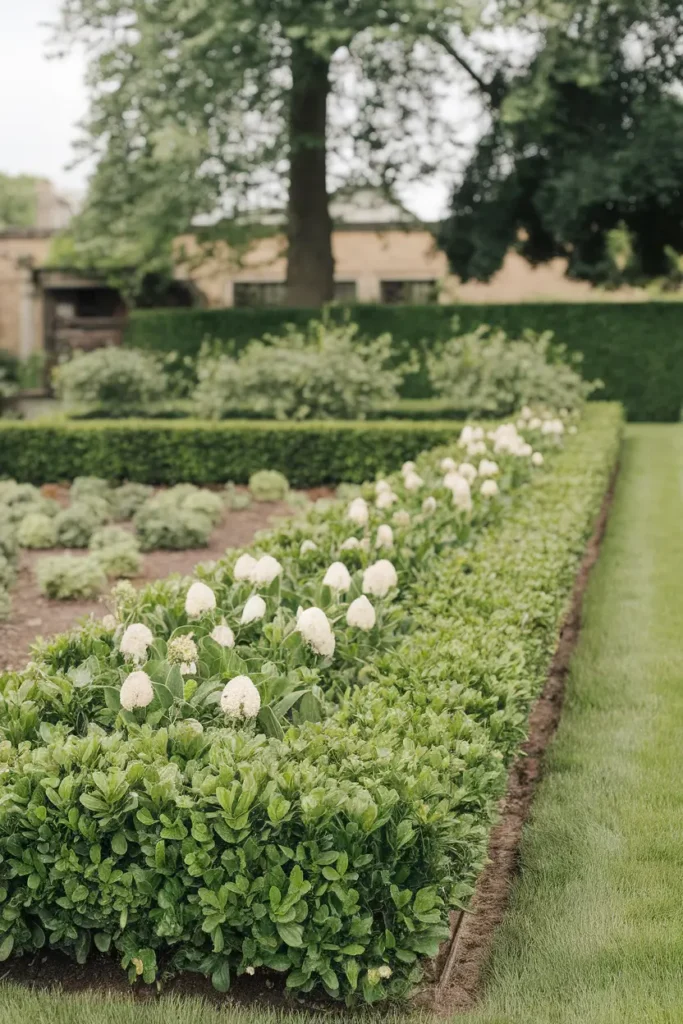
For a lush and traditional English garden vibe, living hedge edging is a stunning, long-term solution.
Low-growing hedges such as boxwood or privet can be planted to create defined borders that also act as decorative elements.
Over time, these hedges grow into dense, beautiful greenery that requires regular trimming to maintain its shape.
They’re perfect for adding structure and a touch of timeless elegance to your outdoor space.
Why Garden Edging Matters
Before we jump into the ideas, let’s take a moment to understand why edging is so important. Incorporating edging into your garden design comes with several benefits:
- Defines spaces and enhances your garden’s aesthetic appeal.
- Prevents soil erosion and controls water runoff.
- Organizes your garden areas and stops plants from spreading haphazardly.
- Protects your plants from accidental damage during lawn maintenance.
Now, let’s take a look at sixteen garden edging ideas that can take your yard to the next level.
FAQs
Which garden edging is the easiest to install?
Plastic edging and scalloped terracotta are among the easiest options for DIY installation. These materials don’t require specialized tools or expertise, making them ideal for beginners.
What is the most cost-effective option?
Gravel edging and plastic edging are economical choices. Both provide a clean and polished look at a fraction of the cost compared to other materials.
How do you choose the right edging for my garden?
Consider the style of your garden, the climate of your area, and your budget. For a formal garden, brick or steel works well. For a more natural look, try stone, shrubs, or wood.
Final words
Garden edging isn’t just a functional feature; it’s a subtle design element that frames your outdoor space, elevating it to a polished retreat.
Whether you prefer the classic charm of brick, the minimalism of gravel, or the creativity of recycled materials, there’s a garden edging idea to match your style.
By incorporating edging into your garden, you’ll not only enjoy a more organized and visually appealing yard but also protect your plants and make maintenance easier.
Feeling inspired? Begin exploring these ideas in your garden and discover the difference a well-defined edge can make. Happy gardening!
